Interview
New station set to transform Bristol’s Brabazon development
Frances Marcellin talks to the West of England Combined Authority about how the new station in the South West of England will help improve connectivity in the region.
Main image: Station Square Office & Train Station at Brabazon. Credit: YTL Developments
Cover Story
Eye in the sky
As the first line of threat detection, airborne early warning is a must-have capability for the world’s militaries. Gordon Arthur reports.
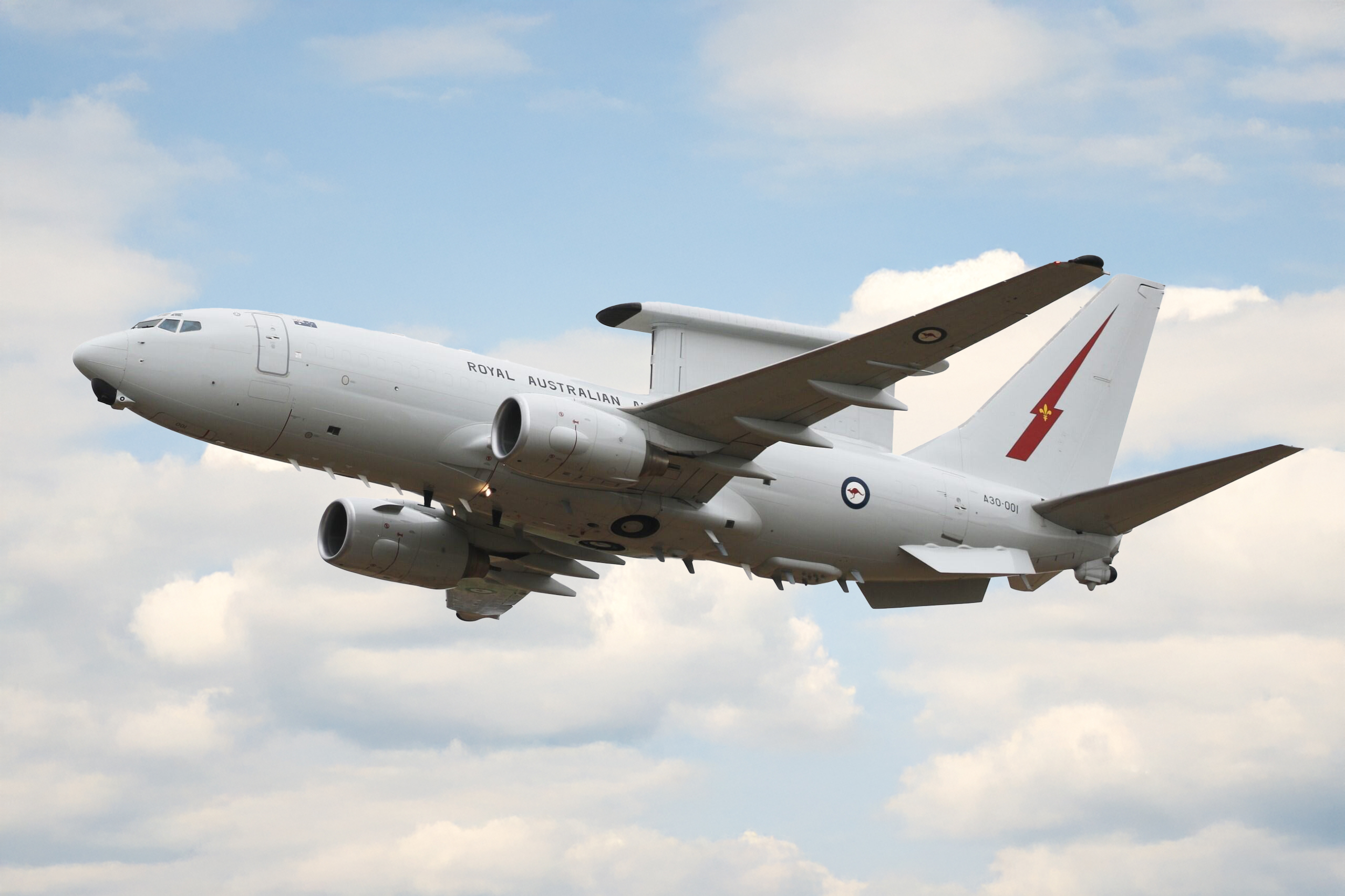
Australia was the first country to adopt the E-7A Wedgetail. Credit: Gordon Arthur
North Filton railway station is due to open next year on the site of former Bristol Filton Airport in South Gloucestershire, UK. Initially serving over 130,000 passengers, the station’s capacity is expected to exceed 400,000 by 2048, as new housing development project is completed.
The station will connect the new mixed-use development of Brabazon, 7.4km (4.6 miles) north of Bristol city centre, to Bristol Temple Meads Station in under 15 minutes. It will also form part of a complete area renewal that includes 6,500 new homes, 30,000 jobs, a 20,000 capacity arena, three new schools, and a new park.
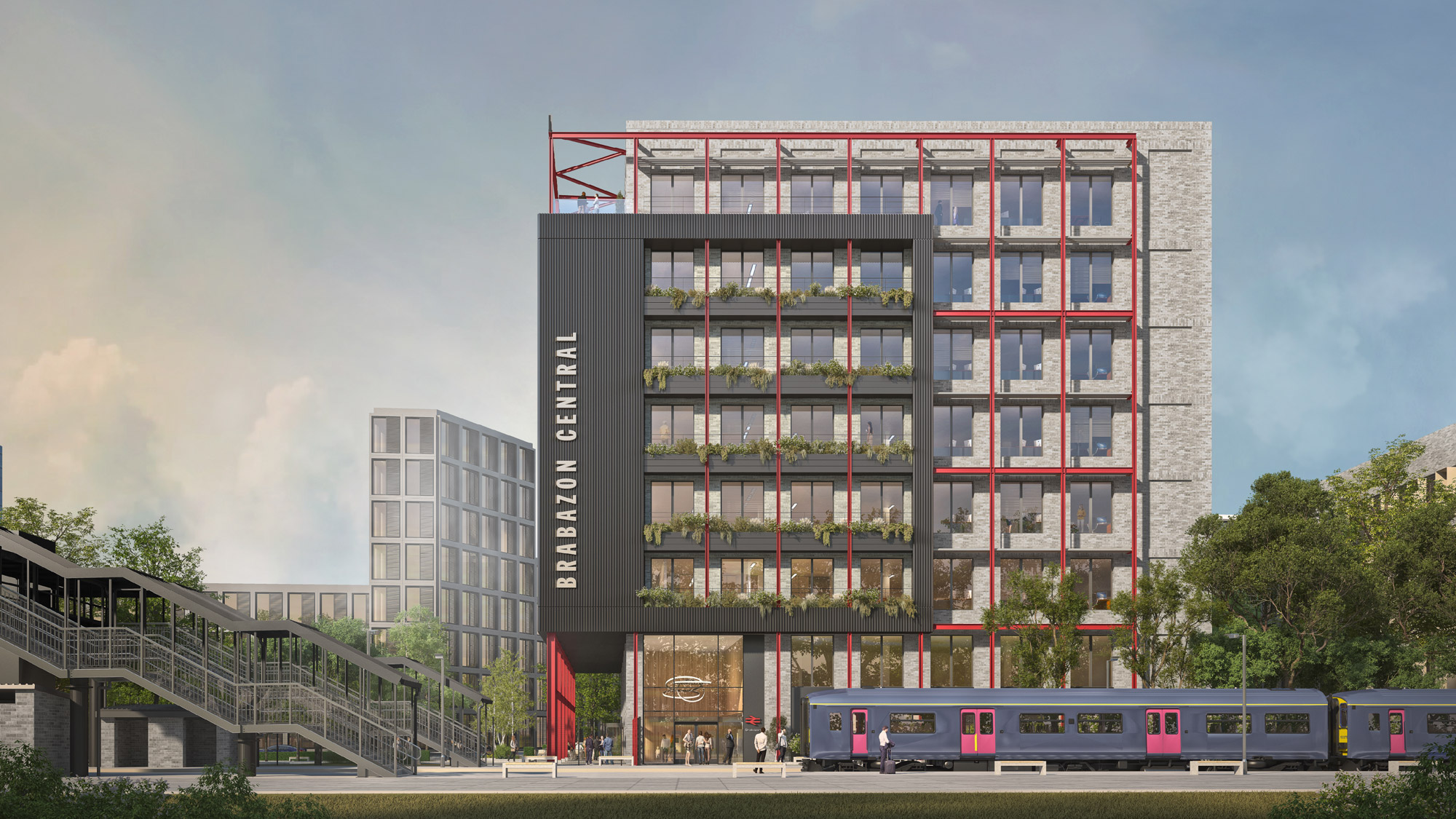
Station Square Office & Train Station at Brabazon. Credit: YTL Developments
Frances Marcellin spoke to the West of England Combined Authority to find out more about the station’s development and its current status.
Frances Marcellin: Why is North Filton station such an important project for the area?
West of England Combined Authority: North Filton railway station is strategically located within the West Innovation Arc Growth Zone, one of five ‘Growth Zones’ identified by the West of England Mayoral Combined Authority with a focus on growth, supporting housing, employment and the economy.
North Filton station, and the associated new Henbury Line rail passenger service, will provide a connection between nationally significant regeneration areas, the West Innovation Arc, which includes the Brabazon development, YTL Bristol Arena, and Bristol Temple Quarter.
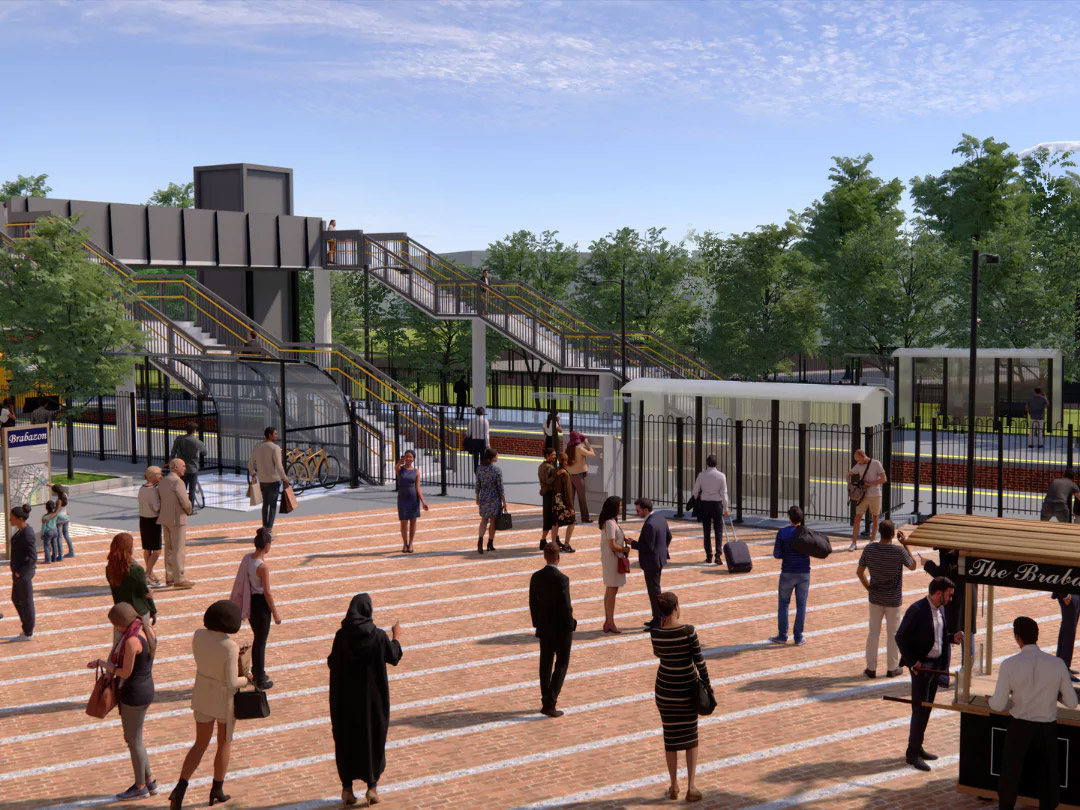
Station Square Office & Train Station at Brabazon. Credit: YTL Developments
Brabazon includes plans for 6,500 homes, three new schools, 30,000 jobs and a new 20,000 capacity arena. North Filton station will provide a key connection to the rail network to link the area to other communities and key destinations.
North Filton station forms part of the wider MetroWest Phase 2 programme which represents a major expansion of Bristol’s urban rail network, being delivered by the Combined Authority and partners. The scheme will deliver three new stations north of Bristol Temple Meads; Ashley Down (opened in September 2024), North Filton and Henbury.
FM: Which entities are responsible for design and funding?
WECA: The West of England Mayoral Combined Authority and local authority partners have undertaken the early project feasibility and development work and have been responsible for allocating the funding to deliver it.
The station will be primarily funded by devolved funding from the Mayoral Combined Authority. Some early development work was funded directly by South Gloucestershire Council and Bristol City Council.
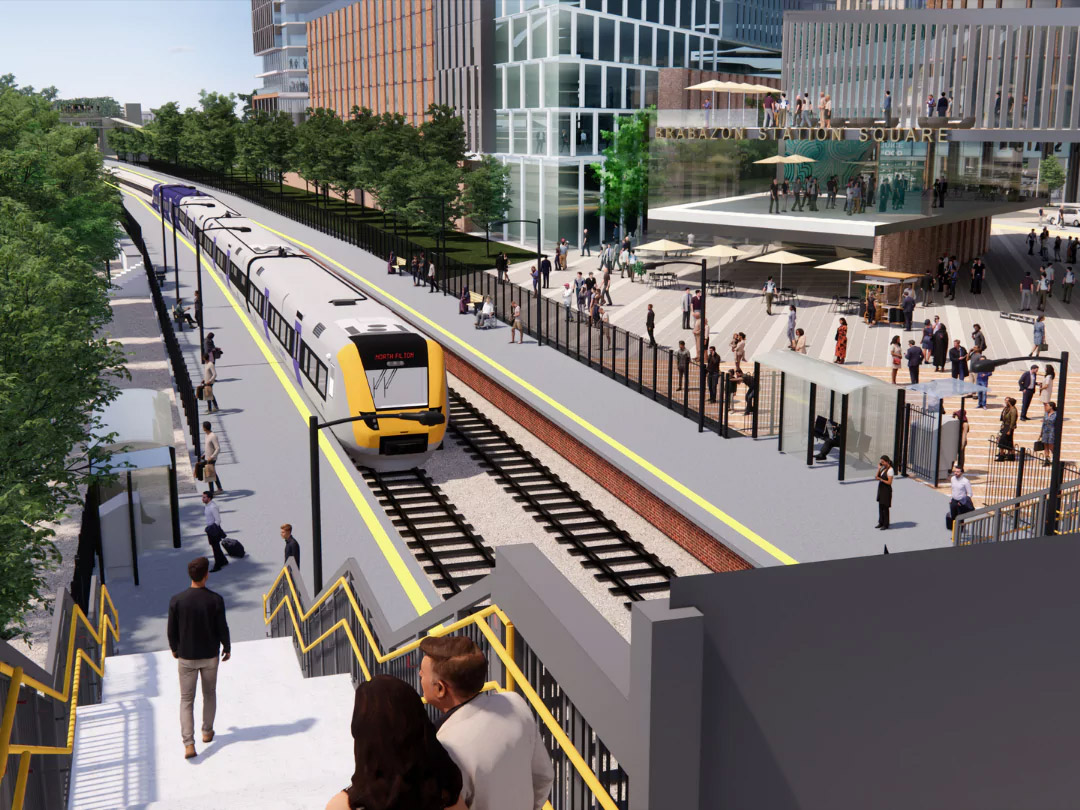
Brabazon station square South. Credit: YTL Developments
Early design work was undertaken by consultants working on behalf of the local councils, but the bulk of the design work has been undertaken by Network Rail and its supply chain, contracted by the Mayoral Combined Authority.
The station gateway, a new public square and station building, is being designed and delivered by the adjacent developer YTL. The project has been working closely with YTL on the design of these elements to ensure that they are fit for purpose. The new public square and station building will play a key role in managing passengers at busy times, such as events at the new arena.
FM: Who will manage the day-to-day operations?
WECA: Once complete, the station will be passed to Network Rail to be managed as a Network Rail asset on its network. The day-to-day operational area of the station will be leased to the train operating company (TOC)/DfT operator, which is currently GWR.
The TOC will lease the station building area from YTL, which will be responsible for the operation of the public square/public realm and accessible car parking.
FM: Which architects designed the station and why were they selected?
WECA: Network Rail contracted with one of its CP7 Framework suppliers, BAM Nuttall, which appointed Tony Gee and Partners as lead designer for the station. Both BAM Nuttall and Tony Gee and Partners were also involved in the successful design and delivery of another recently opened local station at Ashley Down in Bristol.
FM: What does the timeline look like so far and going forward in terms of design, approvals, construction and testing?
WECA: Planning approval occurred in January 2023, and by summer 2025 the outline design was complete, but had taken longer than anticipated. Construction of North Filton station started in the summer of 2025.
Following the site set up, available track access opportunities were utilised in August 2025 to bring forward programme critical trackside drainage works.
Following approval to fund the full delivery of North Filton station by the West of England Mayoral Combined Authority Committee and West of England Joint Committee on 17 October 2025, works are planned over Christmas 2025/26 to renew the tracks through the new station and to ensure that the tracks align with the planned new platforms.
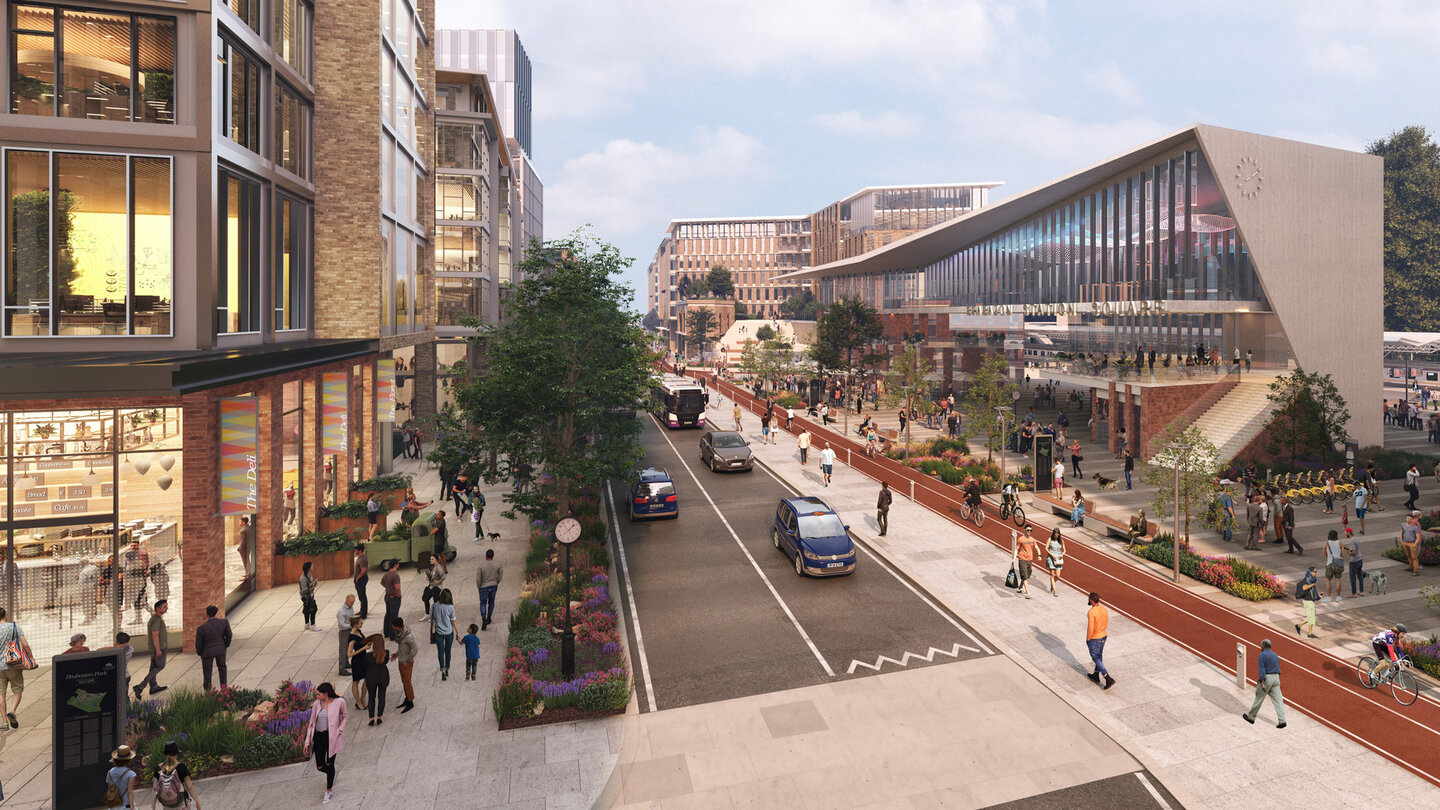
Brabazon town centre and station. Credit: YTL Developments
The platform installation works, installation of the station power supplier, footbridge installation and telecoms/electrical cabling are planned to be completed by autumn 2026, at which point the station can then be fully tested to make sure it’s safe to use and operate.
Another key rail closure is booked for June 2026, when works will be undertaken by Network Rail’s contractors (Southern Rail Systems Alliance) to upgrade the Filton West Curve to achieve a 40mph rail service. This work is critical to ensuring that the new station can be served by a minimum of an hourly rail service at the point of opening.
FM: When is it expected to open?
WECA: The station is planned to open in two stages. Stage one will see an operational unstaffed station open to support the development already underway in the Brabazon area.
Stage two will see the associated facilities completed to enable the full staffed station (station building and second footbridge) to open ahead of the opening of the new arena in 2028.
FM: Can you share the budget details for the development, construction and delivery of the station?
WECA: North Filton station forms part of the wider MetroWest Phase 2 rail programme, so many costs of the development, design and management are shared across the programme.
The current estimated cost of MetroWest Phase 2 is £120.1m, with £83.813m approved for construction on the remainder of North Filton Station, the upgrade to Filton West Curve and funding the operation of the rail service when the station initially opens.
Most of the project’s capital funding is from the Mayoral Combined Authority devolved funding pots such as Economic Development Fund (EDF), City Regions Sustainable Transport Settlement (CRSTS), Local Growth Fund (LGF), Transforming Cities Fund (TCF) and Investment Fund (IF). The remainder has come from local authority contributions, developer funding and a small contribution from Great Western Railway.
FM: How will the new station tie into existing services?
WECA: Initially, for the stage one opening, North Filton will be served by an hourly train service, an extension of the service which currently finishes at Filton Abbey Wood. Services will start from North Filton towards Bristol Temple Meads, calling at all stations on the journey.
The rolling stock on the new line will be a combination of the two-car or three-car 15x or 16x units that currently operate the service to Filton Abbey Wood. The highest capacity of these units is approximately 345 people, including standing passengers.

Brabazon train station. Credit: YTL Developments
The full stage two opening, ahead of the opening of the new YTL arena, will coincide with the opening of Henbury Station to the west of North Filton, which will also include a turnback facility to enable trains to shuttle back and forth to Henbury. The North Filton service will therefore extend to Henbury.
Following completion of the wider MetroWest programme, it is anticipated that the Henbury line and Portishead line services will join, enabling cross-city services between the two destinations. There is a wider ambition for four trains per hour at stations across the growing regional rail network, with £752m secured from the government for wider transport improvements across the West over the coming years.
FM: What provisions are being made to ensure seamless multimodal access?
WECA: The gateway to North Filton station will be via a public square at the new Brabazon development, offering a range of transport interchange opportunities. The Brabazon area will be mixed-use in the vicinity of the station with high-density residential homes. The focus in the immediate environment of the station will therefore be for walking and cycling trips, with accessible (‘Blue Badge’) parking bays and drop-off facilities.
A new segregated cycle route will run through the Brabazon development and connect onto Station Square and the station. The established ‘MetroBus’ network will be extended into the Brabazon development, providing a transport interchange a short walk from the station. Other bus facilities will be provided on the edge of Station Square, allowing scheduled buses and coaches to pick up and set down close to the station, and general car parking will be provided via three multi-storey car parks, a short walk from the station.
FM: What are the projected passenger numbers?
WECA: Passenger demand forecasts have been undertaken as part of the full business case. Within the appraisal, it has been assumed that the full housing development demand along the Henbury line will be reached by 2048, with an incremental change between the station opening year and 2048.
Based on 2023 demand levels, North Filton Station usage per annum forecasts will be 137,800 in the station’s opening year and 408,165 when reaching full housing delivery in 2048.

Russian President Vladimir Putin has threatened to use nuclear weapons. Credit: Asatur Yesayants / Shutterstock
To modernise the platform, via an April request for information, the USAF is canvassing the inclusion of a new radar, electronic warfare equipment and enhanced
communications to create an “Advanced E-7”. Two such examples are sought within seven years, after which other E-7s could be retrofitted with the modifications.
As for the UK, three 737NG aircraft are currently undergoing modification in Birmingham, the first completing its maiden flight in September 2024.
Global Defence Technology asked Boeing what makes the E-7 stand out, and a spokesperson listing three points. First is its allied interoperability. “With the aircraft in service or on contract with Australia, South Korea, Türkiye, the UK and USA – and selected by Nato – its unmatched interoperability benefits a growing global user community for integration in future allied and coalition operations.”
The E-7 platform is less expensive to operate compared to platforms based on small business jets.
Boeing spokesperson

The US is by far the largest spend on nuclear submarines. Credit: US Navy
Country | 2024 | 2025 | 2026 | 2027 | 2028 | 2029 | 2030 | 2031 | 2032 | 2033 | 2034 |
Australia | 3,582 | 3,586 | 3,590 | 3,594 | 3,613 | 3,622 | 6,183 | 6,207 | 6,216 | 6,239 | 6,380 |
China | 2,607 | 2,802 | 3,040 | 3,081 | 3,174 | 3,291 | 3,396 | 3,603 | 3,664 | 3,710 | 4,316 |
India | 2,320 | 2,533 | 3,675 | 2,457 | 2,526 | 2,639 | 2,741 | 2,873 | 2,958 | 3,350 | 3,560 |
Russia | 2,701 | 2,893 | 2,973 | 3,334 | 3,458 | 3,106 | 3,235 | 3,405 | 2,958 | 3,487 | 3,942 |
US | 16,957 | 18,037 | 18,522 | 18,607 | 18,137 | 18,898 | 18,898 | 19,643 | 19,876 | 22,592 | 23,730 |
Lisa Sheridan, an International Field Services and Training Systems programme manager at Boeing Defence Australia, said: “Ordinarily, when a C-17 is away from a main operating base, operators don’t have access to Boeing specialist maintenance crews, grounding the aircraft for days longer than required.
“ATOM can operate in areas of limited or poor network coverage and could significantly reduce aircraft downtime by quickly and easily connecting operators with Boeing experts anywhere in the world, who can safely guide them through complex maintenance tasks.”
Boeing also uses AR devices in-house to cut costs and improve plane construction times, with engineers at Boeing Research & Technology using HoloLens headsets to build aircraft more quickly.
The headsets allow workers to avoid adverse effects like motion sickness during plane construct, enabling a Boeing factory to produce a new aircraft every 16 hours.
Elsewhere, the US Marine Corps is using AR devices to modernise its aircraft maintenance duties, including to spot wear and tear from jets’ combat landings on aircraft carriers. The landings can cause fatigue in aircraft parts over its lifetime, particularly if the part is used beyond the designers’ original design life.
Caption. Credit:
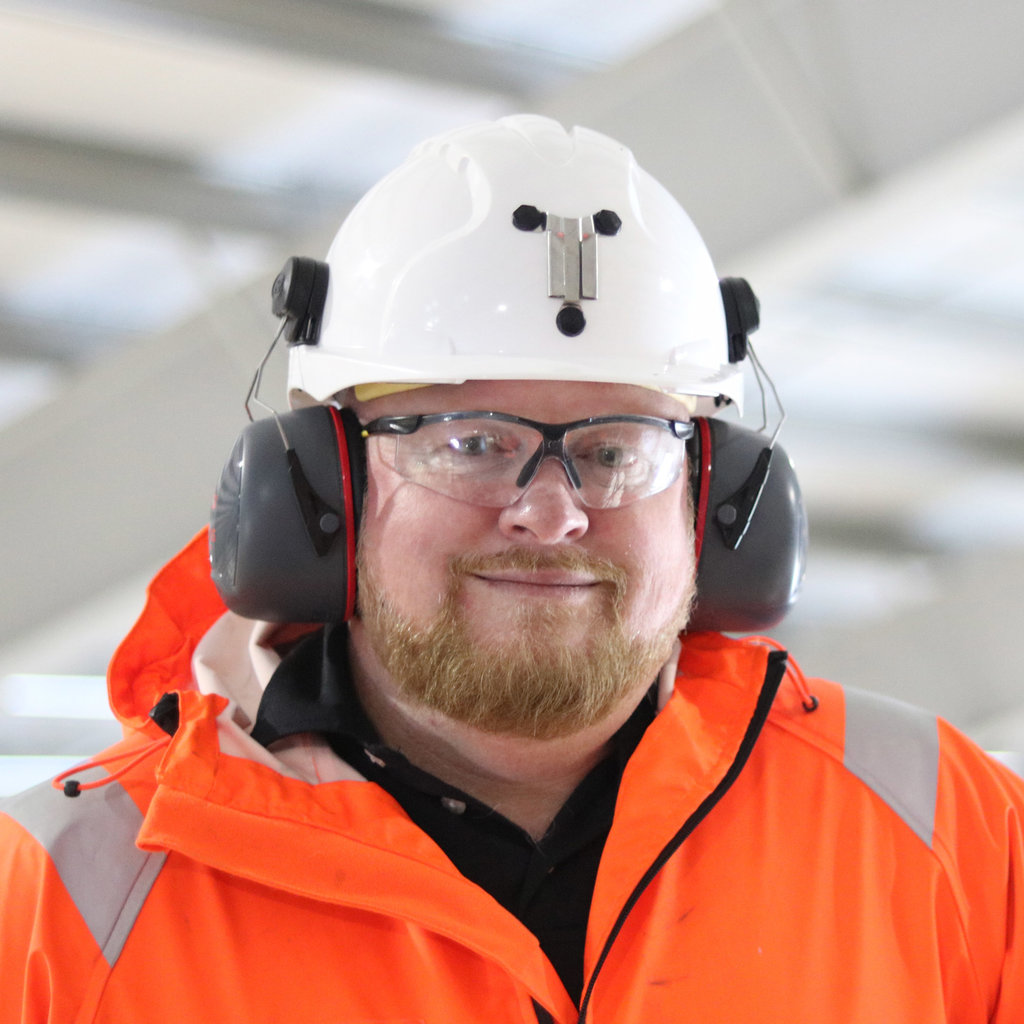
Phillip Day. Credit: Scotgold Resources
Total annual production
Australia could be one of the main beneficiaries of this dramatic increase in demand, where private companies and local governments alike are eager to expand the country’s nascent rare earths production. In 2021, Australia produced the fourth-most rare earths in the world. It’s total annual production of 19,958 tonnes remains significantly less than the mammoth 152,407 tonnes produced by China, but a dramatic improvement over the 1,995 tonnes produced domestically in 2011.
The dominance of China in the rare earths space has also encouraged other countries, notably the US, to look further afield for rare earth deposits to diversify their supply of the increasingly vital minerals. With the US eager to ringfence rare earth production within its allies as part of the Inflation Reduction Act, including potentially allowing the Department of Defense to invest in Australian rare earths, there could be an unexpected windfall for Australian rare earths producers.
